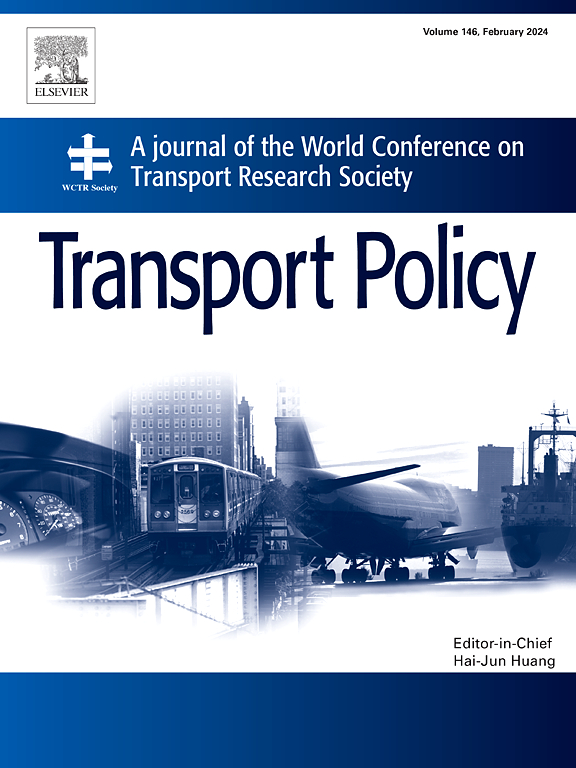从死亡到新生:物流园区是否有助于物流业的本地更新?
IF 6.3
2区 工程技术
Q1 ECONOMICS
引用次数: 0
摘要
在电子商务和全球化时代,物流业已成为地方经济发展的新动力,政府主导的物流园区的规划和建设成为强有力的政策工具。本文对物流园区是否真的如预期般发挥效用持怀疑态度,研究了物流业创造性破坏的地方性过程,重点关注政府主导的物流园区在产业更新过程中如何在企业退出和企业进入之间架起桥梁。利用 2003 年至 2021 年中国第三方物流企业的企业层面数据,并采用系统 GMM 估计方法,我们验证了之前的退出会促进未来的进入,但因企业类型和城市在区域交通网络中的重要性而异。此外,我们还发现了政府主导的物流园区的两大作用:(1)通过提供平台,使各种资源得以重新利用并重组为高质量的新物流企业,从而加速这一进程;(2)优先考虑本地现有企业的重生,而不是其他城市的新进入者,尽管存在一定程度的地方保护主义。政府的政策和规划决定应在不妨碍区域市场一体化的情况下保持这种功能。本文章由计算机程序翻译,如有差异,请以英文原文为准。
From death to birth: Do logistics parks help local renewals in logistics industry?
In the era of E-commerce and globalization, the logistics industry has become a new driving force for local economic development, with government-led logistics parks planned and constructed as a powerful policy instrument. Skeptical about whether logistics parks really take effect as expected, this paper investigates the local process of creative destruction in the logistics industry, focusing on how government-led logistics parks bridge between firm exit and firm entry during industrial renewal. Using firm-level data of third-party logistics firms in China from 2003 to 2021 and adopting system GMM estimator method, we verify that previous exit contributes to future entry but varies by the firm type and the city's importance in the regional transport network. Furthermore, we find two major roles of government-led logistics parks: (1) accelerating this process by providing the platform where various resources can be reused and reorganized into high-quality new logistics firms; and (2) prioritizing the rebirths from local existing firms over arrivals from other cities, though with some level of local protectionism. Government policies and planning decisions should maintain such function without inhibiting regional market integration.
求助全文
通过发布文献求助,成功后即可免费获取论文全文。
去求助
来源期刊

Transport Policy
Multiple-
CiteScore
12.10
自引率
10.30%
发文量
282
期刊介绍:
Transport Policy is an international journal aimed at bridging the gap between theory and practice in transport. Its subject areas reflect the concerns of policymakers in government, industry, voluntary organisations and the public at large, providing independent, original and rigorous analysis to understand how policy decisions have been taken, monitor their effects, and suggest how they may be improved. The journal treats the transport sector comprehensively, and in the context of other sectors including energy, housing, industry and planning. All modes are covered: land, sea and air; road and rail; public and private; motorised and non-motorised; passenger and freight.
 求助内容:
求助内容: 应助结果提醒方式:
应助结果提醒方式:


